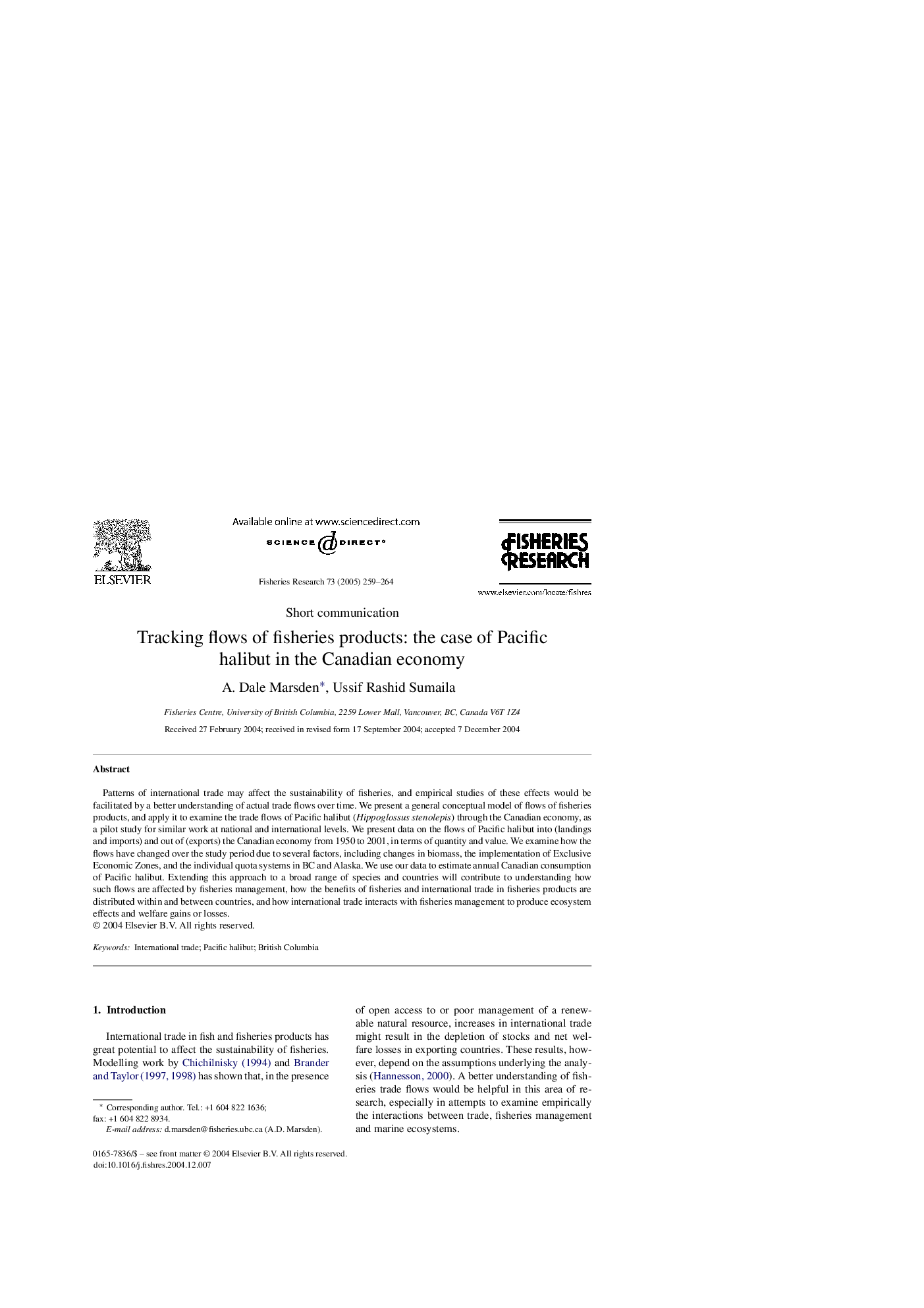| Article ID | Journal | Published Year | Pages | File Type |
|---|---|---|---|---|
| 9481789 | Fisheries Research | 2005 | 6 Pages |
Abstract
Patterns of international trade may affect the sustainability of fisheries, and empirical studies of these effects would be facilitated by a better understanding of actual trade flows over time. We present a general conceptual model of flows of fisheries products, and apply it to examine the trade flows of Pacific halibut (Hippoglossus stenolepis) through the Canadian economy, as a pilot study for similar work at national and international levels. We present data on the flows of Pacific halibut into (landings and imports) and out of (exports) the Canadian economy from 1950 to 2001, in terms of quantity and value. We examine how the flows have changed over the study period due to several factors, including changes in biomass, the implementation of Exclusive Economic Zones, and the individual quota systems in BC and Alaska. We use our data to estimate annual Canadian consumption of Pacific halibut. Extending this approach to a broad range of species and countries will contribute to understanding how such flows are affected by fisheries management, how the benefits of fisheries and international trade in fisheries products are distributed within and between countries, and how international trade interacts with fisheries management to produce ecosystem effects and welfare gains or losses.
Related Topics
Life Sciences
Agricultural and Biological Sciences
Aquatic Science
Authors
A. Dale Marsden, Ussif Rashid Sumaila,
